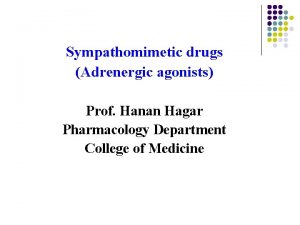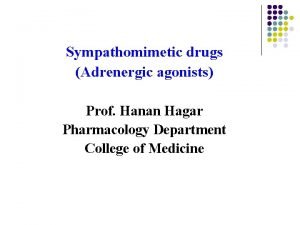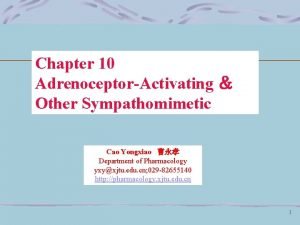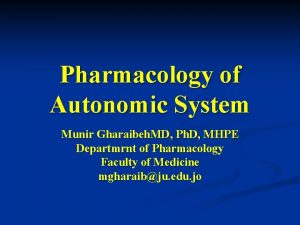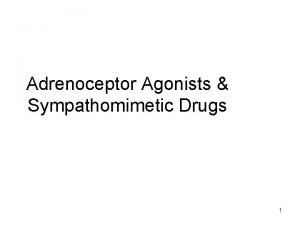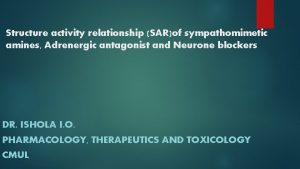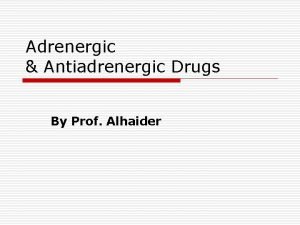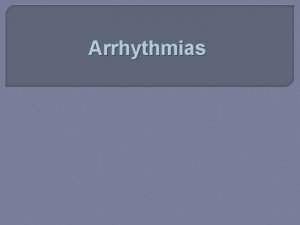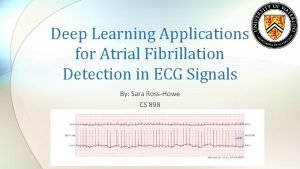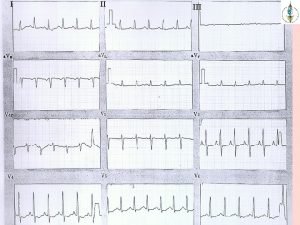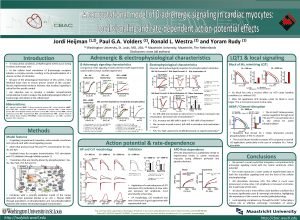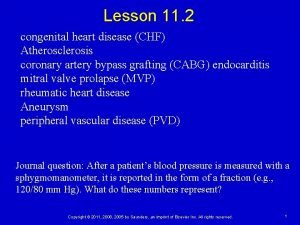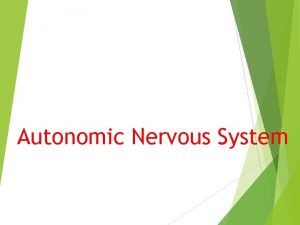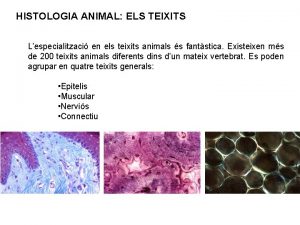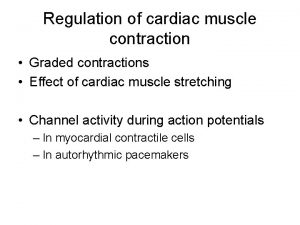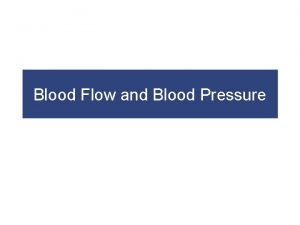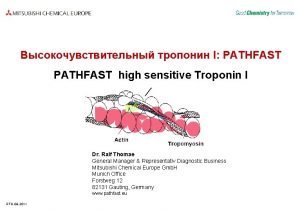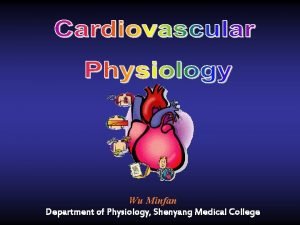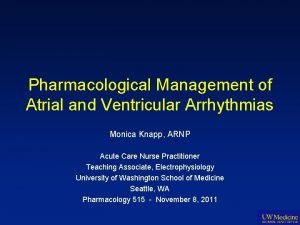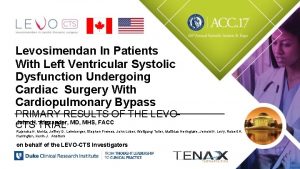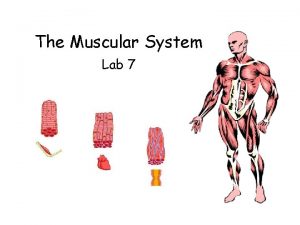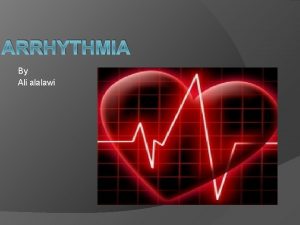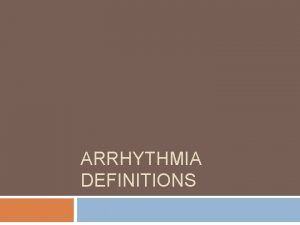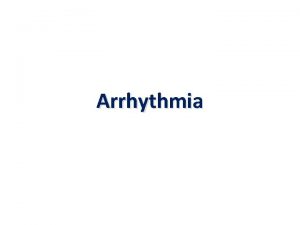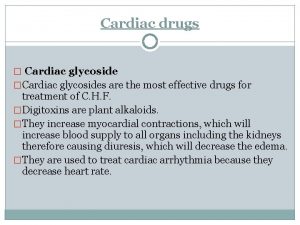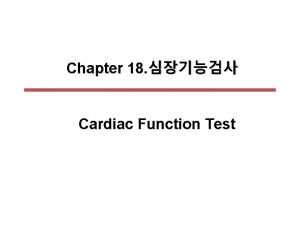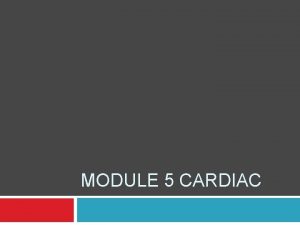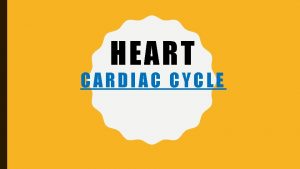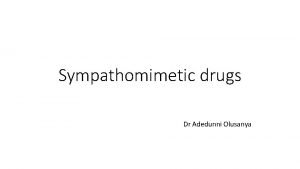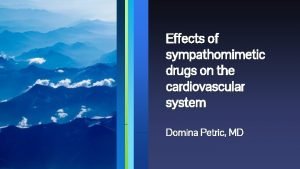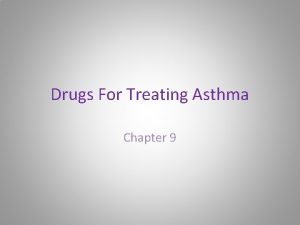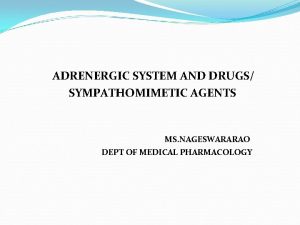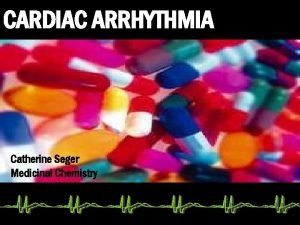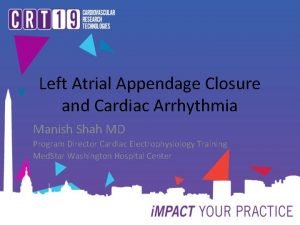Cardiac arrhythmia N Primary quinidinelike drugs sympathomimetic drugs





















- Slides: 21

Cardiac arrhythmia N Primary – quinidine–like drugs, sympathomimetic drugs, calcium channel blockers, β– blockers, digitalis, chloroquine N Secondary to metabolic/electrolyte abnormalities – salicylates, methanol, ethylene glycol Clinical Toxicology & Pharmacology, Newcastle Mater Misericordiae Hospital

Cardiotoxic drugs N All patients should have – oxygenation and protection of airway – decontamination of the GIT l atropine pre–medication – correction of electrolyte abnormalities l acid base balance – cardioversion when appropriate – consultation Clinical Toxicology & Pharmacology, Newcastle Mater Misericordiae Hospital

Cardiac arrest N N Successful resuscitation has been well documented after 8 hours of CPR Overdose patients usually have – a reversible cause for their arrest – good general health – novel treatments for arrhythmias – cerebral protection Clinical Toxicology & Pharmacology, Newcastle Mater Misericordiae Hospital

Antidotes: asystole & bradycardia N N N N Atropine Bicarbonate Calcium Diazepam organochlorines Epinephrine Fab fragments Glucagon everything tricyclic antidepressants calcium channel blockers chloroquine, everything, β–blockers digoxin β–blockers, CCBs Clinical Toxicology & Pharmacology, Newcastle Mater Misericordiae Hospital

Cardiac case 1 N 18 yo female admitted 3 hours after self–poisoning with – 3. 5 g of slow release verapamil (Isoptin SR) – 6 g of paracetamol – 4. 5 g of tetracycline – 1 g of pseudoephedrine N On arrival in casualty – pr 120, BP 110/80, RR 20, afebrile Clinical Toxicology– & Pharmacology, Newcastle Mater Misericordiae Hospital drowsy but oriented and cooperative

Cardiac case 1 N GI decontamination – emesis before arrival – lavaged with return of green tablets – 50 g of charcoal with sorbitol repeated 4 h later N Investigations – ECG l sinus tachycardia with normal QRS width – serum paracetamol at 4 h was 38 µmol/l hepatotoxicity > 1300 µmol/l at 4 hours l Clinical Toxicology & Pharmacology, Newcastle Mater Misericordiae Hospital

Cardiac case 1 N In intensive care unit – 16 hours post overdose – BP fell to 70/40 and then 50/30 – PR 50 – oxygen saturation dropped to 75 % – ECG absent p waves l prominent u waves l normal QRS duration and QT interval l Clinical Toxicology & Pharmacology, Newcastle Mater Misericordiae Hospital

Cardiac case 1 N Treatment – IV atropine 0. 6 mgs – no response – IV calcium gluconate 6 g over 20 minutes l further 6 g over the next hour l – pr 60, sinus rhythm, BP 100/80 – oxygen saturation > 95 % – infusion of 10% calcium gluconate at 2 G/h for 10 hours – she was also given 2. 5 L IV fluids Clinical Toxicology & Pharmacology, Newcastle Mater Misericordiae Hospital

Cardiac case 1 N Outcome – non–cardiogenic pulmonary oedema – twenty four hours post admission l largely recovered , sinus rhythm PR 60, BP 115/70 – peak serum Ca was 4. 8 (2. 18– 2. 47 mmol/l) – serial verapamil levels at 6, 18, 22 and 46 hours were 616, 2374, 2518 and 1006 ng/ml range during usual therapy Clinical Toxicology & Pharmacology, Newcastle Mater Misericordiae Hospital l

Cardiac case 2 N 38 yo female admitted after self–poisoning with – amitriptyline 2525 mg – dothiepin 1650 mg N Found unconscious with suicide note carefully documenting tablets – last seen 9 a. m. , brought in by ambulance at 6 p. m. – later said she had read that 2. 5 g was a lethal Clinical Toxicologydose & Pharmacology, Newcastle Mater Misericordiae Hospital

Cardiac case 2 N No past medical history Depressed for several months, treated by a psychiatrist On examination – absent gag – unconscious, flexes to pain – PR 40, BP 130/100, afebrile – hypoventilating, 02 saturation 94 % – flushed, dilated pupils, reduced bowel sounds Clinical Toxicology & Pharmacology, Newcastle Mater Misericordiae Hospital

Cardiac case 2 N Investigations – FBC – EUC – paracetamol level – ECG – CXR ? aspiration N GI decontamination – gastric lavage and activated charcoal Clinical Toxicology & Pharmacology, Newcastle Mater Misericordiae Hospital

Cardiac case 2 N Treatment and outcome – given Na. HC 03 IV – intubated and hyperventilated – IV normal saline – ABGs monitored to keep p. H 7. 5 – serial ECGs – prolonged unconsciousness – extubated 40 hours later – no long term sequelae Clinical Toxicology & Pharmacology, Newcastle Mater Misericordiae Hospital

Cardiac case 3 N 26 yo female – found unconscious by police in caravan – empty bottle of tablets with label removed – no relatives/other history available N On examination – PR 140, BP 120/80, afebrile – unconscious – GCS 6 Clinical Toxicology & Pharmacology, Newcastle Mater Misericordiae Hospital

Cardiac case 3 N Investigations – ECG QRS width 120 ms l PR interval 200 ms l – CXR l N aspiration pneumonia Management – intubated, lavage, charcoal, antibiotics Clinical Toxicology & Pharmacology, Newcastle Mater Misericordiae Hospital

Cardiac case 3 N Outcome – sudden deterioration 2 hours later – bradycardia – asystole – unable to be resuscitated Clinical Toxicology & Pharmacology, Newcastle Mater Misericordiae Hospital

Tricyclic antidepressants N N Ingestion of 15– 20 mg/kg is potentially fatal Mechanism of action – block re–uptake of noradrenaline and serotonin – competitive antagonists at H 1 and H 2 receptors – anticholinergic effects – membrane effects on sodium channel, quinidine–like effect Clinical Toxicology & Pharmacology, Newcastle Mater Misericordiae Hospital

Toxico–kinetics N Absorption and distribution – highly lipid soluble rapidly absorbed l high volume of distribution l – delayed absorption due to anticholinergic effect in GIT – p. H dependent protein binding > 95% large variation in amount of free TCA l a change in the p. H from 7. 38 to 7. 50 produces a 21% reduction in free TCA l Clinical Toxicology & Pharmacology, Newcastle Mater Misericordiae Hospital

TCA management N General – supportive care, ABG, ECG, electrolytes – lavage, charcoal with sorbitol/mannitol N CNS toxicity – seizures IV diazepam l IV phenytoin (15– 18 mg/kg) l – anticholinergic delirium benzodiazepines, haloperidol l seizure and fever consider physostigmine l Clinical Toxicology & Pharmacology, Newcastle Mater Misericordiae Hospital

TCA management N Arrhythmias – plasma alkalinisation to p. H ~ 7. 5 l sodium bicarbonate, hyperventilation – drug treatment l acute – magnesium – sotalol – lignocaine l prophylactic – phenytoin – overdrive pacing Clinical Toxicology & Pharmacology, Newcastle Mater Misericordiae Hospital

TCA management N hypotension – volume expansion – p. H correction – alpha agonists e. g. noradrenaline – inotropics e. g. dopamine, dobutamine Clinical Toxicology & Pharmacology, Newcastle Mater Misericordiae Hospital
 Sympathomimetics
Sympathomimetics Salbutamol sympathomimetic
Salbutamol sympathomimetic Sympathomimetics
Sympathomimetics Sympathomimetic agents
Sympathomimetic agents Sympathomimetic drugs
Sympathomimetic drugs Sar of sympathomimetic agents
Sar of sympathomimetic agents Sympathomimetic effects
Sympathomimetic effects Dysrhythmia vs arrhythmia
Dysrhythmia vs arrhythmia Mit-bih arrhythmia database
Mit-bih arrhythmia database Arrhythmia
Arrhythmia Arrhythmia
Arrhythmia Which arrhythmia refers to rapid random inefficient
Which arrhythmia refers to rapid random inefficient Sympathomimetic agents
Sympathomimetic agents Magenta cyan and yellow are the ____ color. *
Magenta cyan and yellow are the ____ color. * Teixit muscular cardiac
Teixit muscular cardiac Cardiac muscle
Cardiac muscle Pearson education
Pearson education Pathfast hsctni
Pathfast hsctni Homometric regulation of cardiac output
Homometric regulation of cardiac output Classification of antiarrhythmic drugs with examples
Classification of antiarrhythmic drugs with examples Cardiac index
Cardiac index Muscle diagram
Muscle diagram
